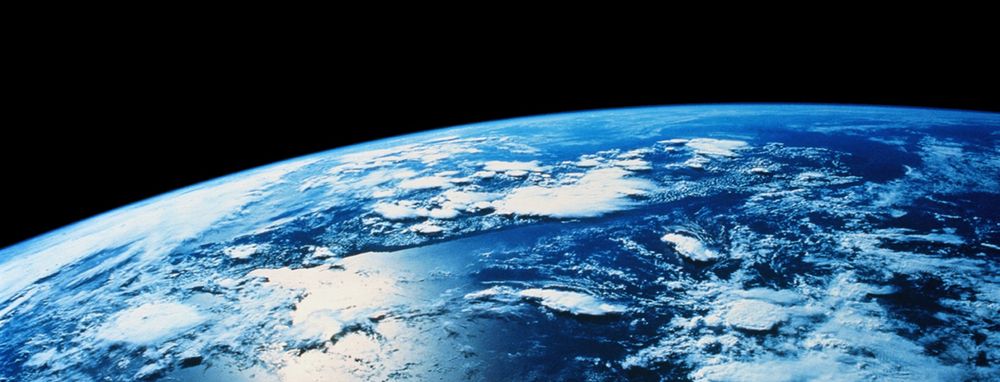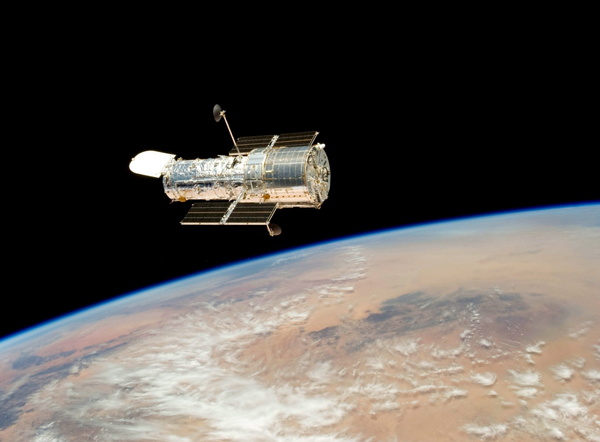WHY IS EARTH PERFECT TO SUSTAIN LIFE?
We live on this beautiful Earth where we have water to drink, air to breathe, the sun and the moon to differentiate between day and night, land and marine life, vibrant coloured flowers, mountains, hills, and valleys, and fellow human beings from different places with different languages. Have you ever wondered why we are here on Earth and not on some other planet? Have you given a thought about what makes Earth so special to have all these different life forms on it? Why didn’t we find something similar on the other planets? What are the peculiarities of Earth that allow us to live here?

Our Earth is the third planet that is closer to its source of energy, the Sun, and it is more than 4.5 billion years old. Life has existed for more than 3 billion years. The Drake equation, proposed in 1961, gives the probable number of extraterrestrial civilisations existing in the Milky Way galaxy (The Drake Equation | Astronomy 801: Planets, Stars, Galaxies, and the Universe, n.d.). As the equation hypothesizes, there might be nearly a billion planets that are similar to Earth, but the question is, do all of them have the ‘Goldilocks’ traits in them? ‘Goldilocks’ is the girl in the kids’ story, ‘Goldilocks and the Three Bears’. She finds the porridge, the chair, and the bed of the baby bear ‘just right’ for her. Let us see what characteristics planet Earth has that make it to be defined as the ‘Goldilocks planet’ or ‘just the right one’ to support intelligent, complex human life.

- A ‘right’ position in the galaxy:
-
Our solar system occupies the right place in the spiral Milky Way galaxy, which is known as the “Galactic Habitable Zone,” where life is more likely to form. A galactic habitable zone is determined by various factors:
- The right amount of metallicity (available amount of all elements heavier than hydrogen and helium. It forms a terrestrial rocky planetary system) (Gonzalez et al., 2001)
- the location in the galaxy
- the vast number of stars
- The rate at which catastrophic events like gamma-ray bursts, supernovae, etc., occur.
-
The spiral arm of the galaxy might be suitable for the existence of habitable stars, but they also contain a lot of stars and a huge number of molecular clouds. This will expose the planets within the solar system to a large number of comets and asteroids by damaging the protective layer around the star, called the Oort cloud (a theoretically proposed cloud of spherical shape that contains icy objects rotating around the sun but at a distance beyond the travel path of Pluto) (8 Things That Make Life on Earth Possible - Our Planet, n.d.; Orion Arm - Wikipedia, n.d.). The formation of numerous stars and an already-existing extensive amount of stars within the spiral arm can expose all the stars within it to supernova explosions, which can hinder the development of life in stars (Orion Arm - Wikipedia, n.d.). Our Sun (which is a star) is located at the outer side of the minor arm in the galaxy called the Orion Arm, and it is rotating near the corotation circle (around the centre of the galaxy), thus keeping it away from the major spiral arms and a huge number of stars (Orion Arm - Wikipedia, n.d.; Vázquez et al., 2008).
-
- A right place in the solar system: Earth is located at a precise distance from the sun, receiving heat that the life-forms can tolerate as well as light energy for life to survive. Venus has a surface temperature of 480 °C, which is too hot for life to exist, and Mars is too cold (up to -140 °C), where blood and water will freeze. Earth has icy regions, hot deserts, and even normal climatic conditions for us to live in. Sun’s energy is important for the earth as it is used by plants for photosynthesis, maintains weather, plays an important role in the water cycle, food chain, etc.
- The earth’s magnetic field: The magnetosphere is present outside the earth’s atmosphere due to the earth’s molten core containing iron and nickel. This generates a magnetic field around the Earth, deflecting the solar wind (charged particles) and preventing it from coming into the Earth’s atmosphere.This protects the earth’s ozone layer from stripping away and thus protects the Earth and its living organisms from the harmful solar radiation. Due to the lack of a magnetic field around Mars, its atmosphere is lost because of solar flares.

- Earth’s atmosphere: The earth’s atmosphere is formed by different gases and it is surrounded around the earth by gravitational attraction. The atmosphere contains air which is made up of
21% oxygen, 78% nitrogen, negligible amount of carbon dioxide and argon, water vapour, and even dust-particles. The earth’s atmosphere is divided into different layers (Troposphere,
Stratosphere, Mesosphere, Thermosphere, Exosphere, and Ionosphere), each having a particular function to perform.The troposphere contains air that contains a lower amount of carbon dioxide than on Mars and Venus. It also contains 99% of the water vapour, so clouds appear here. Thus, this layer helps in maintaining the Earth’s temperature and life-forms are sustained here. The stratosphere contains the protective ozone layer, which absorbs the harmful UV radiation from the sun and converts it to heat, thus making it warmer here. The greenhouse gases, like carbon dioxide,
ozone, and chlorofluorocarbons, absorb the sun’s heat and keep the atmosphere warm, but too much of it can damage the ozone layer. - Water: It is one of the most important factors that help sustain life of earth, and till now no other planet has demonstrated its presence in liquid form. Two-thirds of the earth’s surface is covered with water, but only nearly 1% of it is in usable form, like rivers, lakes, and ponds. We need water to drink and survive. Water can dissolve a lot of substances, and it is used by almost everything on earth. Water contains the oxygen we require, and it is used in the transportation of vitamins and minerals in the bodies of living organisms. A wide range of marine life lives in them. Water is the major component in the human body and is part of many cellular processes in the body. The water cycle maintains the available freshwater on the earth’s surface and helps in maintaining the climatic conditions. One of the moons of Jupiter, called Europa, has an ice-covered surface. Scientists believe that water might exist in liquid form under its ice-bed.

- The presence of Jupiter: This is the largest planet in the solar system, and it is made up of gas like Saturn and Uranus. Our earth is a rocky one, and the chances of life in Jupiter, Saturn, and Uranus is nearly zero. The metallic core of the planet creates an extremely strong magnetic field around it. This attracts comets, meteors, and asteroids towards the planet, which would otherwise cause damage to the Earth. The Shoemaker-Levy 9 comet, in 1994, was pulled up
by Jupiter’s gravity and the fragments collided with it (Jupiter: Our Cosmic Protector? - The New York Times, n.d.).
The sun’s light, the earth revolving around it, its own rotation about the axis, and the earth’s moon are also the specialities of earth to support the diverse life-forms in it. Research is still going on to find whether water is available elsewhere in the space and other conditions which could possibly sustain life. Proxima B, Wolf 1061c, TRAPPIST-1D (by Kepler Space Telescope), and Gliese 832c are found to be in the habitable zone hoping to have water and other conditions for life to survive. Transiting Exoplanet Survey Satellite (TESS) of NASA has found a planet called TOI 700 D which is of the size of Earth and located in the habitable zone of its star (Garner, 2019).
We are given everything free and no other planet is found to have such luxury for life to flourish there. Shouldn’t we feel much responsible and careful in protecting whatever we have to live here? Our way of living has caused damage to the environment and thus causing climate change, and depletion of its resources. Let us understand how Earth is the ‘right one’ to support all forms of life ranging from the land to marine to even the small insects and microbes, and be careful not to harm it through our activities.
Reference:
1. 8 Things that make Life on Earth Possible - Our Planet. (n.d.). Retrieved January 28, 2022, from https://ourplnt.com/life-on-earth-possible/ 2. Garner, R. (2019). NASA Planet Hunter Finds its 1st Earth-size Habitable-zone World. http://www.nasa.gov/feature/goddard/2020/nasa-planet-hunter-finds-its-1st-earth-size-
3. habitable-zone-world Gonzalez, G., Brownlee, D., & Ward, P. (2001). The Galactic Habitable Zone: Galactic Chemical Evolution. Icarus, 152, 185–200. https://doi.org/10.1006/icar.2001.6617
4. Jupiter: Our Cosmic Protector? - The New York Times. (n.d.). Retrieved January 29, 2022, from https://www.nytimes.com/2009/07/26/weekinreview/26overbye.html
5. Orion Arm - Wikipedia. (n.d.). Retrieved January 28, 2022, from https://en.wikipedia.org/wiki/Orion_Arm
6. The Drake Equation | Astronomy 801: Planets, Stars, Galaxies, and the Universe. (n.d.). Retrieved January 28, 2022, from https://www.e-education.psu.edu/astro801/content/l12_p5.html
7. Vázquez, R. A., May, J., Carraro, G., Bronfman, L., Moitinho, A., & Baume, G. (2008). Spiral Structure in the Outer Galactic Disk. I. The Third Galactic Quadrant. The Astrophysical Journal, 672(2), 930–939. https://doi.org/10.1086/524003
8. Image credits:
https://th.bing.com/th/id/OIP._DjuoUoucpP--ruexLnTugHaFF?pid=ImgDet&rs=1
https://solarsystem.nasa.gov/system/resources/detail_files/285_ssc2008-10b1.jpg
https://i.stack.imgur.com/X55ko.jpg
https://cdn.vectorstock.com/i/thumb-large/31/47/layers-of-atmosphere-infographic-vector-
Written By
Roslin Elsa Varughese - Roslin is a Research scholar at the Centre for Adavanced Studies, in Crystallography and Biophysics department of University of Madras. She is an experienced Physics subject expert and holds Master’s degree in Physics.




